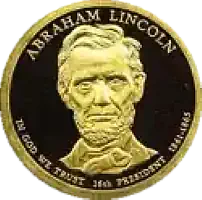
Modern Dollar Coins
Introduction to Modern Dollar Coins
The modern United States dollar coin is often called the “Sacagawea dollar” or the “Native American dollar.” It holds an important place in the country’s currency history. The coin first appeared in 2000. It replaced the Susan B. Anthony dollar, which people rarely used. This was mainly because it looked very similar to the quarter coin in size and color.
Design and Features
Sacagawea’s Portrait
The coin features Sacagawea, a Shoshone Native American woman who helped Lewis and Clark on their expedition. Her image faces right and holds her infant son on her back. This design symbolizes guidance and strength.
Reverse Side: Native American Themes
The reverse side showcases changing Native American designs each year. These designs celebrate the culture, history, and contributions of Native American tribes. For example, one year features a Native American harvesting corn, while another shows traditional pottery.
Purpose and Acceptance
The Mint introduced this coin to improve dollar coin usage. Since it is golden-colored and slightly larger, people can easily tell it apart from quarters. However, despite these improvements, the coin has not fully replaced paper dollars. Many people still prefer dollar bills.
Circulation and Collecting
Collectors appreciate modern dollar coins for their unique designs. Many collect complete series of the Native American dollar coins. Additionally, limited edition issues or special mint marks attract interest. While circulation coins are common, proof coins are more valuable.
Recent Changes and Future Outlook
In recent years, the U.S. Mint has focused on releasing dollar coins mainly for collectors. This shift means fewer coins enter general circulation. Still, the coins remain an important part of American numismatics. Moving forward, new designs may continue to honor America’s diverse heritage.
Conclusion
In summary, the modern dollar coin represents a meaningful attempt to modernize U.S. currency. Thanks to its distinct design and cultural significance, it holds a special place in coin collecting. Although it has not fully replaced paper currency, its story continues to evolve with each new issue.
The origins of the Sacagawea dollar coin date back to 1997, when the United States Mint initiated a competition, a competition not just for designs but for an emblem of honor, one that would pay tribute to the invaluable contributions of Native Americans to the nation’s rich history and diverse culture. The winning design of the Sacagawea dollar coin was a testament to the artistry and heritage of Native Americans. Crafted by the talented sculptor Glenna Goodacre, the coin bore a portrait of Sacagawea, a remarkable Shoshone woman. Her pivotal role as a guide and interpreter during the Lewis and Clark Expedition in the early 19th century made her an iconic figure in American history. Sacagawea’s image on the coin serves as a lasting tribute to her significant contributions to the nation’s exploration and the expansion into the western frontier.
The official release of the Sacagawea dollar coin for circulation took place on January 27, 2000, with a grand ceremony held at the Smithsonian Institution’s National Museum of American History in Washington, D.C. The coin bore a distinctive golden hue, which set it apart from other denominations, and featured a smooth edge adorned with a series of grooves. This distinctive edge design made it easily distinguishable in the pockets of Americans, reducing confusion and the likelihood of it being confused with the quarter.
The choice of gold color and the unique edge of the Sacagawea dollar were not merely aesthetic considerations but rather important design elements that emphasized the coin’s distinctiveness. The golden hue was a nod to the richness of Native American culture and history, while the grooved edge was a practical feature that aided in tactile identification, particularly for those with visual impairments.






 '
'